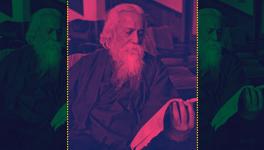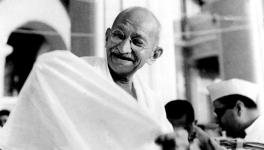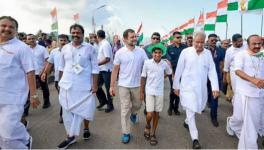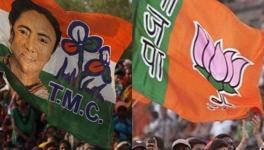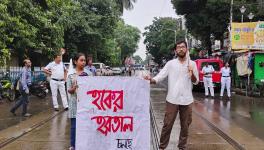History of Hindutva in Bengal
While the Bharatiya Janata Party may have discovered the new MSP i.e. the Minimum Selling Price of opposition netas in West Bengal, Hindutva and communalism have a lost history in the region – and its unchecked rise calls for its recollection. This will allow us to evaluate the roots of the threat which the BJP poses in Bengal.
Contrary to common knowledge, the coinage of the term Hindutva precedes Savarkar by almost four decades. It was in 1892 in Bengal, that Gurudas Chatterjee published Chandra Nath Basu’s book Hindutva. The publication chimed with the 1891 Census report which recorded that Muslims outnumbered the Hindus—an increase from 48% as recorded in the 1872 census.
The Swadeshi movement, although dominated by Hindu revivalist overtones, marked the popular participation of Muslims in Bengal. Abdur Rasool and Liaqat Hussain emerged as prominent Swadeshists with extremist leanings. During the first wave of the movement, the Bengal Mahomedan Association and the Indian Musalman Association were established in 1906 and 1907, respectively to counter the new pro-partition Muslim League, 1906.
However, the prominence of the anti-Swadeshi campaign of the Muslim press most notably the Mihir-o-Sudhakar (Muslim paper with the largest circulation) and the rich and more powerful leadership of Nawab Khwaja Salimullah of Dhaka and Syed Nawab Ali Chaudhury of Mymensingh soon outstripped their plebeian Swadeshi rivals. The collaboration of this patrician stratum with the colonial government concomitantly produced the Simla deputation which pressed for the distinctive recognition of Muslim interest from those of the Hindus—marking the communal split in anti-colonial Indian politics.
Also read: BJP’s Top 3 Agenda for Bengal: Communalise, Polarise, Mobilise
The Swadeshi movement demanded the boycott of goods, which bore heavily on the poor. Historians have noted that the poor Muslims and the Namashudras ended up buying imported cloth and salt for their cheap prices, failing to maintain the strictures of the movement. And in the wake of the Swadeshi’s failure, the Hindu nationalists turned towards the idiom of the cultural nation—immediately after the Bengal renaissance consummating during the early colonial phase but, dying out with the decline of Bengal’s commercial sector.
Intellectual historian Andrew Sartori has noted that ‘‘even the former equivocal liberals of the moderate Congress seemed to have become an avenging angel of culturalist indigenism’’. It was a radical break from the early 19th-century intellectual-political tradition which focussed on reform within Hinduism. For instance, in the winter of 1830, the young radicals of the Hindu periodical Parthenon had declared that ‘‘doorga pooja is a thing entirely against my principles and I have never acted, nor will act against them, though I might be disliked by my kindred’’.
Similarly, early reformers like Tarachand Chakraborty spoke of separation of powers, representative government, while Russick Krishna Mullick welcomed reason as the sole guide to all actions of man in society. He wrote, “Religion like science, is peculiar to man in the animal kingdom. Both stem from a common natural course of curiosity.” Therefore the seed of religion is planted in the social being of man, not some phantasmagoria of the ‘other world’—a fact brought about by later anthropological research.
What needs to be kept in mind is the fact that these prominent and upper-class men of the Bengal renaissance remained aloof, both socially and politically, from the swathes of poor Bengali masses. Prof. Sushobhan Sarkar has also commented on the ‘obsession with Hindu traditions which helped to keep the men of our (Bengal) renaissance aloof from the masses’. Later thinkers such as Aurobindo Ghosh and Bipin Chandra Pal reimagined the Hindu heritage to meet the challenges of colonial modernism. However, such imaginings were rooted in the Orientalist construction of Hinduism.
The new situation was marked by the feebleness of the nationalists in front of an all-powerful colonial state. Representational politics initiated by the Morley-Minto reforms in 1909 led not to a territorial or civic nationalism but minimal political representation on communal lines. Just after the passage of the Act, Lieutenant-Colonel U.N. Mukherjee of the Indian Medical Service published a series of articles under the title ‘A Dying Race’.
Also read: 'Bengali Pride' to be TMC's Main Poll Plank to Counter BJP's Aggressive Hindutva
Relying on the census reports (1872-1901), he showed that in Bengal the Muslim population increased by a third, while the Hindu population increased by less than a fifth. The argument was based on faulty premises as it did not take into account things such as migrations, change of survey methods, and the reassessment of the region.
The Marxist historian, Vijay Prashad, has noted that the articles did fuel apprehension and paranoia among the Hindus but did not fulfil their objective in entirety because E.A Gait, member of the census department, categorically pointed out the major lacuna in Mukherjee’s wild assertions—caste. He noted, ‘‘Census returns of the Hindus are misleading as they include millions of people who are not really Hindus at all, who are denied the ministrations of Brahmans and are forbidden to enter Hindu temples, and, in many cases, are regarded so unclean that their touch, or even their proximity, causes pollution’’. Gait’s objection was not unfounded. It held true even in independent India which saw Ambedkar giving a call to the dalits for conversion to Buddhism and openly declaring that ‘I will not die a Hindu’.
The rural Muslim population in Bengal witnessed considerable changes in their social life. Post-1857 saw the degeneration of the feudal-aristocracy among the Muslims but the Muslim peasantry got some respite through the tenancy legislations enacted by the colonial government. Through the Act X of 1859, the tenants became more assertive of their occupancy rights which directly posed an unsettling challenge to the ‘permanently settled’ Hindu zamindars. The former’s class assertion was marked by a fair degree congruence between religious revivalist movements such as the Faraizi movement which led to a rendering of a communalised account of the conflict almost inevitable.
Major newspapers of that time, such as the Hindu Patriot also took up communal positions. An article in the weekly Som Prakash, noting the qualms of the zamindars wrote, “A Mahomedan tenantry is a source of considerable annoyance. They do not readily pay the rents, and seek every pretext for avoiding payment.”
The class assertion also intertwined with the social-identity reconfiguration of the Muslims. More and more rural Muslims started adopting Perso-Arabic names describing themselves as ‘Muslims’ rather than ‘Bengalis’. Concomitantly, there was a massive move to claim foreign ancestry, mainly to cancel out the ubiquitous and denigrating argument employed by both the caste Hindus and the ashrafiya among the Muslims that rural Muslims were low caste converts. In the 1891 Census, the number of rural Muslims using the caste prefix ‘Sheikh’ shot up from 1.5% in 1872 to 99.1%—a marked departure from the social syncretism shared by both the Hindu and Muslim poor.
In the later years, when representational politics, albeit encased in the communal box, took a mass character, Congress too failed to stem the communal tide which had a solid class basis. The Krishak Praja Party, set up by the Muslims spurred by the Bengal Tenancy Act, 1928, was a non-communal party of the Muslim peasantry with anti-zamindari slogans. In the Bengal Congress, in the run-up to the 1937 elections, Fazlul Haq refused Jinnah’s terms and sent feelers to the former for a pre-poll alliance which unfortunately was never reciprocated. Later, on the eve of independence, Bengal stood divided and soaked in the blood of both Hindus and Muslims, majority among them being poor.
More than half a century later, (West) Bengal has found itself on a similar cliff from which it fell. The coming elections would surely be a cliff hanger. An ordeal for the poor, both Hindus and Muslims. The task for the Left is cut out. It is to organise a class unity of the poor against the machinations of a conniving Trinamool Congress and a communal BJP.
(The author is a research scholar with the Department of World History, University of Cambridge. The views are personal.)
Get the latest reports & analysis with people's perspective on Protests, movements & deep analytical videos, discussions of the current affairs in your Telegram app. Subscribe to NewsClick's Telegram channel & get Real-Time updates on stories, as they get published on our website.













